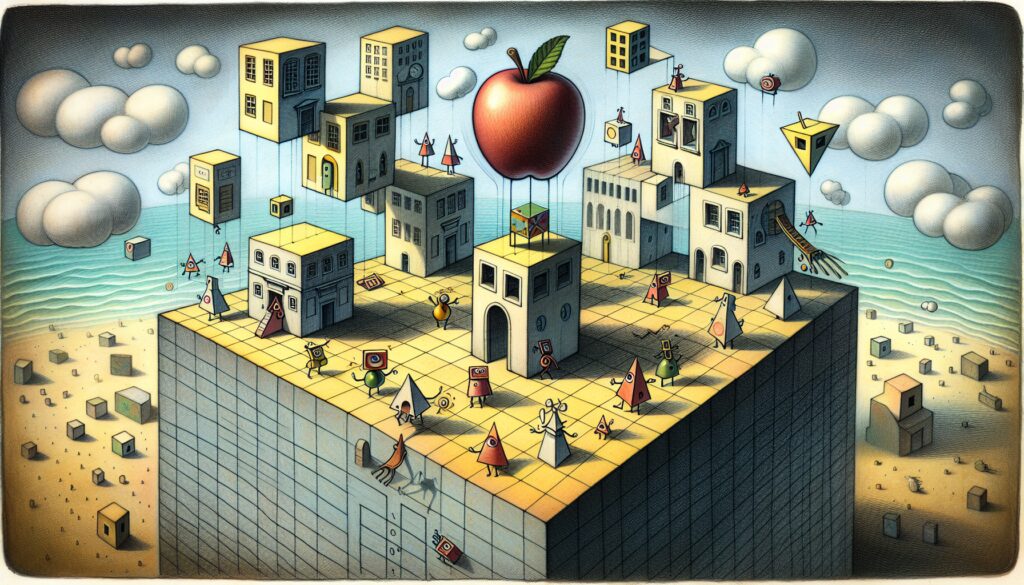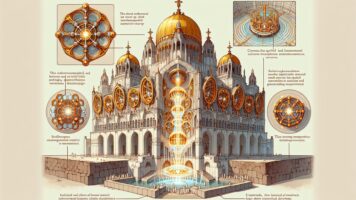In Edwin Abbott’s imaginary world of Flatland, all inhabitants are completely two-dimensional shapes like squares, circles, and triangles. These flat beings live in a 2D universe, only aware of left-right and forward-back movements. They have no concept of up or down.
The Apple from the Third Dimension
Imagine a 3D apple-shaped creature hovering above Flatland. It tries to greet a friendly-looking square, but the square can’t see the apple and hears the voice seemingly coming from inside its closed house. The square becomes concerned about its sanity.
To make its presence known, the apple descends into Flatland. However, Flatlanders can only perceive cross-sections of 3D objects. As the apple moves through their plane, they see a series of 2D shapes that appear to change size and form mysteriously.

The Square’s Journey to the Third Dimension
Frustrated, the apple lifts the square out of Flatland. The square experiences a new perspective, seeing inside closed rooms and other flat creatures. It’s like having X-ray vision. When the square returns to Flatland, it appears out of nowhere to its friends. The square tries to explain its experience but struggles to point to or describe the third dimension.
Exploring the Fourth Dimension
To understand higher dimensions, we can start with a cube:
• A line segment moved at right angles to itself creates a square
• A square moved at right angles to itself creates a cube
Projections and Shadows
• A cube’s shadow in 2D is typically drawn as two connected squares
• This projection loses some properties of the original 3D object
The Tesseract (4D Hypercube)
• Imagine moving a cube through a fourth dimension
• The result is a 4D hypercube or tesseract
• We can only see its 3D shadow: two nested cubes with connected vertices
Interesting Facts
• Edwin Abbott Abbott, who created Flatland, was not only a Shakespearean scholar but also a schoolmaster and theologian
• The concept of Flatland has inspired many works in mathematics, science fiction, and even video games
• Some physicists theorize that our universe might actually have more than three spatial dimensions, but they’re imperceptible to us
• The idea of higher dimensions is crucial in string theory, which proposes 10 or 11 dimensions to explain fundamental physics
🧠 Key Takeaways
• 🔲 Flatland is a 2D world that helps us understand dimensional limitations
• 🍎 Higher-dimensional beings would appear mysterious to lower-dimensional creatures
• 📐 We can use mathematical concepts to explore and represent higher dimensions
• 🌌 Our perception of reality might be limited by our dimensional constraints







